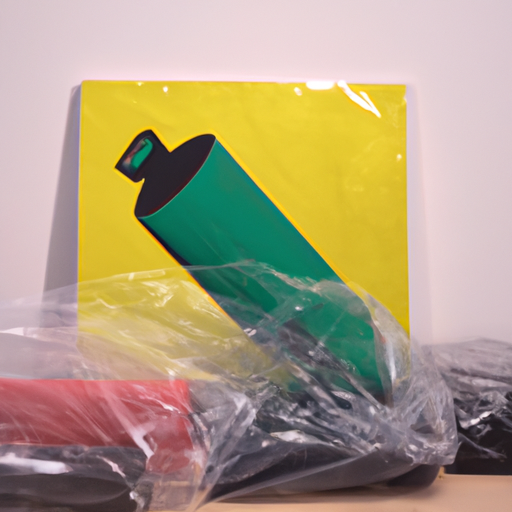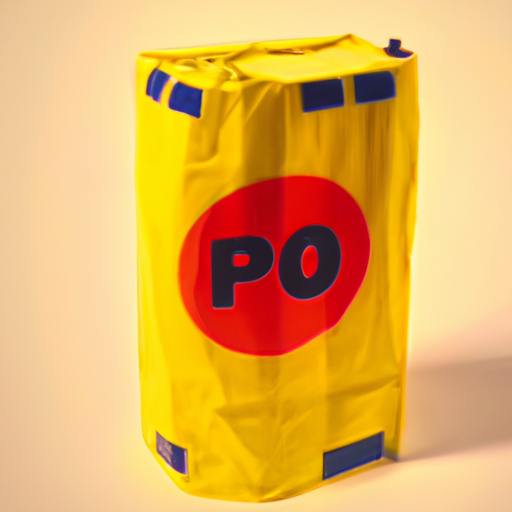
-
Table of Contents
- Eco-Friendly Packaging: From Design to Disposal
- The Benefits of Eco-Friendly Packaging
- Design Considerations for Eco-Friendly Packaging
- Eco-Friendly Packaging Materials
- Recycled Paper and Cardboard
- Biodegradable Plastics
- Mushroom Packaging
- Plant-Based Plastics
- Disposal Methods for Eco-Friendly Packaging
- Summary
Eco-Friendly Packaging: From Design to Disposal

As the world becomes more conscious of the environmental impact of human activities, the need for eco-friendly packaging has become increasingly important. From design to disposal, every step in the packaging process can have a significant effect on the environment. In this article, we will explore the various aspects of eco-friendly packaging, including its benefits, design considerations, materials, and disposal methods.
The Benefits of Eco-Friendly Packaging
Eco-friendly packaging offers numerous benefits, both for businesses and the environment. Here are some key advantages:
- Reduced carbon footprint: Eco-friendly packaging materials, such as recycled paper and biodegradable plastics, have a lower carbon footprint compared to traditional packaging materials. This helps to reduce greenhouse gas emissions and combat climate change.
- Enhanced brand image: Consumers are increasingly concerned about the environmental impact of the products they purchase. By using eco-friendly packaging, businesses can demonstrate their commitment to sustainability and attract environmentally conscious customers.
- Cost savings: While eco-friendly packaging materials may initially seem more expensive, they can lead to long-term cost savings. For example, using lightweight materials reduces shipping costs, and recycling packaging materials reduces the need for new materials.
- Regulatory compliance: Many countries and regions have implemented regulations and standards to promote eco-friendly packaging. By adopting sustainable packaging practices, businesses can ensure compliance with these regulations and avoid potential penalties.
Design Considerations for Eco-Friendly Packaging
Designing eco-friendly packaging involves considering various factors, including materials, size, and functionality. Here are some key design considerations:
- Material selection: Choosing the right materials is crucial for eco-friendly packaging. Recycled paper, cardboard, and biodegradable plastics are popular choices. It is important to consider the entire lifecycle of the packaging material, including its production, transportation, and disposal.
- Minimalism: Adopting a minimalist design approach can help reduce the amount of packaging material used. Simplifying the design and eliminating unnecessary components not only reduces waste but also enhances the overall aesthetic appeal.
- Size optimization: Packaging that is too large for the product not only wastes materials but also increases shipping costs and carbon emissions. Optimizing the size of the packaging to fit the product snugly can help reduce waste and improve efficiency.
- Functionality: Eco-friendly packaging should not only protect the product but also provide convenience to the consumer. Incorporating features such as easy opening, resealability, and portion control can enhance the user experience and reduce food waste.
Eco-Friendly Packaging Materials
There are various eco-friendly packaging materials available today. Let’s explore some of the most commonly used ones:
Recycled Paper and Cardboard
Recycled paper and cardboard are widely used in eco-friendly packaging due to their sustainability and recyclability. These materials can be made from post-consumer waste or pre-consumer waste generated during the manufacturing process. By using recycled paper and cardboard, businesses can reduce the demand for virgin materials and minimize deforestation.
Biodegradable Plastics
Biodegradable plastics are another popular choice for eco-friendly packaging. These plastics are designed to break down naturally over time, reducing their impact on the environment. However, it is important to note that not all biodegradable plastics are created equal. Some require specific conditions, such as high temperatures or industrial composting facilities, to decompose properly.
Mushroom Packaging
Mushroom packaging, also known as mycelium packaging, is an innovative and sustainable alternative to traditional packaging materials. It is made from the root structure of mushrooms, called mycelium, which can be grown in molds to create various shapes and sizes. Mushroom packaging is biodegradable, compostable, and requires fewer resources to produce compared to traditional packaging materials.
Plant-Based Plastics
Plant-based plastics, also known as bioplastics, are derived from renewable resources such as corn, sugarcane, or algae. These plastics have a lower carbon footprint compared to petroleum-based plastics and can be biodegradable or compostable, depending on the specific type. However, it is important to ensure that plant-based plastics are sourced from sustainable and responsibly managed crops to avoid negative environmental impacts.
Disposal Methods for Eco-Friendly Packaging
Proper disposal of eco-friendly packaging is essential to maximize its environmental benefits. Here are some common disposal methods:
- Recycling: Recycling is one of the most effective ways to dispose of eco-friendly packaging materials. Many municipalities have recycling programs that accept paper, cardboard, and certain types of plastics. It is important to check local recycling guidelines to ensure proper sorting and disposal.
- Composting: Biodegradable packaging materials, such as mushroom packaging and certain types of bioplastics, can be composted. Composting allows these materials to break down naturally and return to the soil as organic matter. However, it is important to ensure that the packaging is certified compostable and meets the requirements of local composting facilities.
- Reusing: Reusing packaging materials is another sustainable disposal method. Businesses can encourage customers to reuse packaging by designing it to be durable and functional. Additionally, consumers can repurpose packaging materials for storage or other creative uses.
- Waste-to-Energy: In some cases, eco-friendly packaging materials that cannot be recycled or composted can be used as a source of energy through waste-to-energy facilities. These facilities convert non-recyclable waste into heat or electricity, reducing the reliance on fossil fuels.
Summary
Eco-friendly packaging plays a crucial role in reducing the environmental impact of the packaging industry. By considering design considerations, such as material selection, minimalism, size optimization, and functionality, businesses can create packaging that is both sustainable and appealing to consumers. Recycled paper and cardboard, biodegradable plastics, mushroom packaging, and plant-based plastics are some of the eco-friendly materials available. Proper disposal methods, such as recycling, composting, reusing, and waste-to-energy, ensure that eco-friendly packaging materials are effectively managed at the end of their lifecycle. By embracing eco-friendly packaging practices, businesses can contribute to a more sustainable future while reaping the benefits of reduced carbon footprint, enhanced brand image, cost savings, and regulatory compliance.
